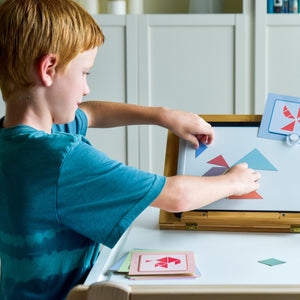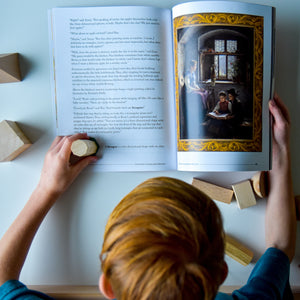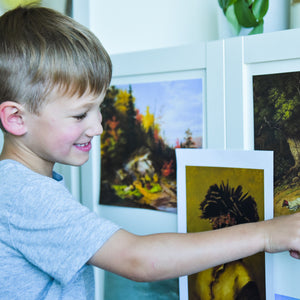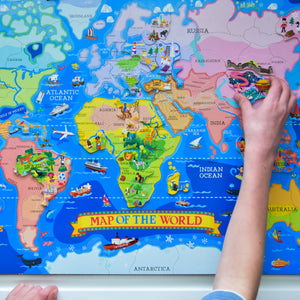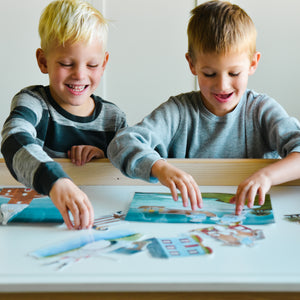Nurturing a Love for People and Cultures around the World

"Study and learn, and become acquainted with all good books, and with languages, tongues, and people" (D&C 90:15).
My interest in cultures around the world was sparked when I took my first language class in eighth grade. For the next ten years, I formally studied the French language and francophone literature, history, and culture. I even lived in French-speaking housing for a time while in college and traveled to other countries so I could have authentic immersion opportunities.
The cultural adventures I experienced during that time in my life were fulfilling and satisfying. They enriched and expanded my view of the world and my place and responsibility in it, and they fostered a great love in my heart for the diversity of people and rich culture in our world. I strive to nurture this same love in my children and to teach them to be good global citizens.
Fortunately, there are many wonderful ways to learn about our international brothers and sisters. As we do so, we can recognize our commonalities and celebrate our differences that bring such beautiful diversity to our world and to our lives. Some of my family’s favorite ways to learn about our world are through books, videos, music, cuisine, language studies, travel, local community events, and personal interactions with friends of other cultures living around us.
Books
Fiction or nonfiction, books are a great source of information about other places and the people who live there. Through literature, we can learn about holidays, religions, customs, and history from all parts of the world. Furthermore, many books include beautiful images of people, landscapes, and architecture. It’s true what writer Katrina Mayer said, “A book is a magical thing that lets you travel to far-away places without ever leaving your chair.”
Videos
Chances are pretty good that there’s a video somewhere to supplement our reading. Thanks to contemporary technology, we can watch a Chinese New Year parade, Hindu Holi festival, Native American powwow, Hawaiian luau, Thai lantern festival, Mombasa carnival, and a Mexican Day of the Dead celebration. Watching such videos allows us to hear the music and see the dancing, food, rituals, costumes, and makeup associated with each one. There are wonderful movies to watch with culturally rich stories, both fiction and nonfiction, set in different locations that are worth watching too.

Music
From Azonto to zydeco, music is a powerful cultural expression, and anyone from anywhere can understand it. Perhaps that’s what Henry Wadsworth Longfellow meant when he said, “Music is the universal language of mankind.” There are countless instruments and voices that create a wide variety of unique sounds and rhythms that can be enjoyed by all. Music, both ancient and modern, can be appreciated as we play it, sing it, dance to it, or simply listen to it, in live concert or otherwise.

Cuisine
Visiting an ethnic restaurant or trying a new recipe in the home kitchen can be a lot of fun! Have you ever tried butter chicken or saag paneer with a side of basmati rice and naan? These Indian dishes have become two of my family’s favorite meals since we first tried making them at home (yep, even our toddler loves them). We also love to go out for some Vietnamese phở, Filipino pancit, or Lebanese tabbouleh from time to time, and it’s not uncommon for us to pick up French croissants for breakfast or make an Australian pavlova for dessert. Seeing, smelling, tasting, and making new foods can be an exciting cultural experience.
Language Studies
Modern transportation and communication platforms facilitate global interaction like never before, so we’re bound to meet people from all over the world in one way or another these days. Wouldn’t it be nice to be able to communicate with them? Knowing a second language has increased my ability to meaningfully interact with a lot more people and enlarged my circle of friends. Learning another language has loads of cultural, social, and educational benefits, and there are many courses, computer programs, and mobile apps to help us develop new linguistic skills.

Travel
There is nothing like physically being present somewhere and fully experiencing a place with all its unique sights, sounds, tastes, and smells. Oh, how I would love to see a Dutch tulip field, hear a Tibetan monk chant, taste a gyro made in Greece, or smell my way through a Moroccan spice market. Even domestic travel can lead to cultural experiences. Travelling allows us to break away from media-made stereotypes and see other places and people for how they really are. We live in a big world, and traveling really helps put our individual microcosms in perspective. Travelling will inevitably expose us to the social ills that exist, such as poverty, racism, and lack of adequate access to good healthcare and education for everyone, but instead of seeing this exposure as a negative consequence to traveling, we can see it as an opportunity to have meaningful discussions with our children about the causes and remedies of such important global issues and what role we can play in preventing and alleviating them.

Local Community Events
Let us not overlook the cultural opportunities in our local communities, no matter how small. I’ll never forget tasting my first stuffed grape leaves and baklava at a fundraiser for a Greek Orthodox Church in my hometown in Pennsylvania, attending a Crow Tribe powwow when I lived in northern Wyoming, touring a tall ship during a festival in the naval community where I lived in Virginia, or watching a group of college students from India play cricket where I now live in rural Idaho. Check your local library, newspaper, college, or community websites for cultural events happening near you and consider writing a couple of them on your calendar.

Personal Interactions
Make friends! We’re missing out if we avoid people who are different from us. Leaving our comfort zone to strike up a conversation with someone at the park or inviting a new-to-the-area family over for dessert can lead to wonderful experiences and friendships. Children are naturally great at this. For example, they so easily make friends out of complete strangers at the playground simply because they found someone who liked to go down the slide or hang upside down on the monkey bars like them. Like our children, we can find something in common to talk about, and from there, conversations can build and relationships can develop.
Learning about different people and cultures around the world through books, videos, music, cuisine, language studies, travel, local community events, and personal interactions is a long, but certainly not a comprehensive, list; however, it’s a good starting point when we’re looking for ways to intentionally incorporate some added culture into our families’ home education. We can begin by incorporating just one or two ways that our children would find useful and enjoyable and then expand from there as opportunities arise. As we do so, our knowledge of “languages, tongues, and people" (D&C 90:15) will grow, and we will be able to increasingly value the beautiful diversity in our world.

- The Mindful Heart


